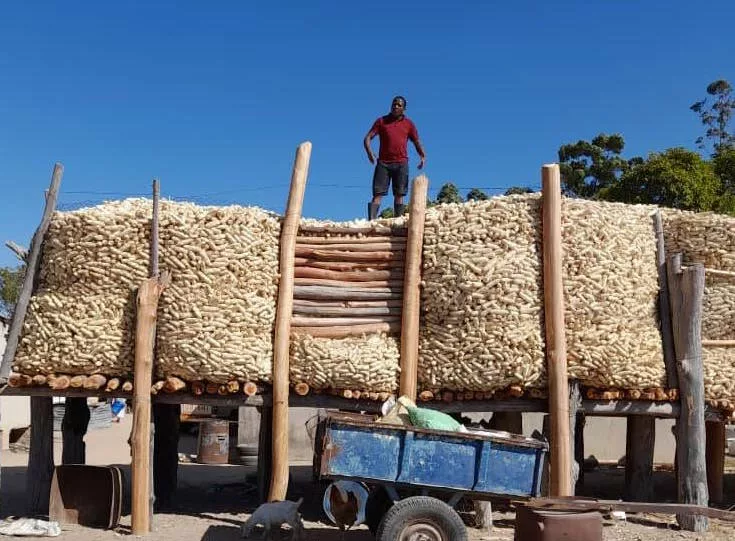|
Getting your Trinity Audio player ready...
|
OWN CORRESPONDENT
Zimbabwe, like many other African nations, heavily relies on agriculture as a major source of livelihood and economic activity. The country’s agricultural sector is primarily rain-fed, meaning it depends on regular and adequate rainfall for successful crop production. However, Zimbabwe has experienced a series of prolonged droughts and erratic rainfall patterns over the past few decades, adversely affecting its agricultural productivity and water resources.
Several factors contribute to the disappearing rains and drought conditions in Zimbabwe. One of the significant factors is climate change. Rising global temperatures and changing weather patterns have disrupted traditional rainfall patterns worldwide. Zimbabwe has witnessed a decline in overall rainfall and an increase in the frequency and intensity of droughts.
Deforestation and land degradation are also contributing factors. Zimbabwe has experienced extensive deforestation, particularly due to unsustainable agricultural practices, commercial logging, and the use of firewood for fuel. Deforestation reduces the capacity of the land to retain moisture and alters local weather patterns, leading to reduced rainfall.
Additionally, the El Niño-Southern Oscillation (ENSO) phenomenon plays a role in Zimbabwe’s rainfall patterns. El Niño events, characterized by the warming of the central and eastern tropical Pacific Ocean, have been associated with decreased rainfall in southern Africa, including Zimbabwe. Conversely, La Niña events, which involve cooler-than-average sea surface temperatures in the same region, can bring increased rainfall. These natural climate variations can exacerbate or mitigate the effects of climate change on rainfall patterns.
The consequences of the disappearing rains in Zimbabwe are far-reaching. Reduced agricultural productivity leads to food shortages, malnutrition, and economic instability. Water scarcity affects both rural and urban areas, impacting human health, sanitation, and access to clean drinking water. Droughts also contribute to the displacement of rural populations as people migrate in search of better living conditions.
Economically speaking, climate change has affected business in Zimbabwe. Zimbabwe generates its electrical power using hydroelectric energy. When the country experiences poor rainfall, it faces power outages. The country no longer exports power to other countries in the region, affecting the country’s GDP.
But even so, farmers haven’t given up already. They are still hoping for a sustainable future if governments could work together to develop and invest in technology and clean energy, implement the international climate agreements already in place, increase food security, and improve disaster management systems.
To address these challenges, Zimbabwe has implemented various measures and strategies. These include promoting sustainable agricultural practices, investing in water infrastructure, such as dams and irrigation systems, and developing early warning systems to help communities prepare for drought conditions. International assistance and cooperation are also crucial in supporting Zimbabwe’s efforts to combat the effects of climate change and ensure sustainable water management.
Reviving agriculture systems in Zimbabwe requires a comprehensive approach that addresses various challenges faced by the sector. Here are some strategies proposed by Climate Action Network Zimbabwe members:
Melissa Murwira from Young Volunteers for Environment said that there is a need for Investment in Infrastructure by improving rural infrastructure such as irrigation systems, roads, storage facilities, and electricity supply to enhance productivity, reduce post-harvest losses, and provide better access to markets.
Tendai Gracious Moyo, Director of Let’s Green the Future, emphasized the establishment of accessible and affordable credit facilities for farmers, especially smallholder farmers. This will enable them to invest in modern farming techniques, purchase quality inputs, and expand their operations.
Tinashe Mangosho stressed the need to strengthen agricultural research institutions and extension services to provide farmers with up-to-date information, training, and technical support. This will help disseminate knowledge on improved farming practices, pest and disease management, and climate-smart techniques.
Brenda Kashiri, a student at Bright Light Academy, encouraged farmers to diversify their crops and adopt crop rotation practices. This will help improve soil fertility, reduce pest and disease pressure, and enhance resilience to climate change.
Ropafadzo Chin’ore emphasized the need to promote climate-smart agricultural practices that are resilient to climate change. This includes the use of drought-tolerant crop varieties, agroforestry, conservation agriculture, and integrated pest management.
Trinity Gokondo buttressed the need to strengthen market linkages for farmers by improving rural infrastructure, establishing farmer cooperatives, and supporting the development of agro-processing industries. This will help farmers access higher-value markets and increase their profitability
Norah Samupunga Director of Action 24 bolstered the need to provide training and capacity-building programs for farmers, particularly on business skills, financial management, and marketing. This will enable them to make informed decisions, improve productivity, and enhance their competitiveness
Wellington Madumira, the National Coordinator of Climate Action Network Zimbabwe said that implementing these strategies requires a long-term commitment from various stakeholders, including the government, farmers, private sector, and development partners. Collaboration and coordination among these stakeholders will be crucial for the successful revival of agriculture systems in Zimbabwe.






